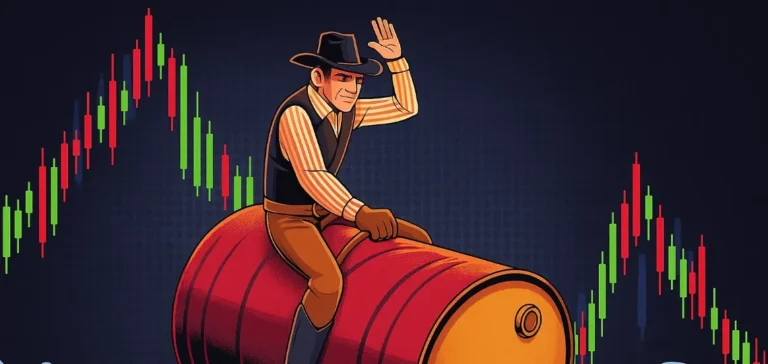The global oil market is currently experiencing a period of unusual volatility, heavily influenced by two automated financial algorithms named Risk-Parity and Crisis Alpha. These sophisticated financial tools are disrupting historical market logics, previously based primarily on traditional physical factors such as inventory levels, production, or consumption. Today, these financial mechanisms, activated by specific market players, frequently take precedence over traditional indicators. This fundamental shift creates increased complexity in anticipating price movements.
An increasing disconnect with fundamentals
Historically, oil prices typically tracked variations in physical inventories, with surpluses causing price drops and shortages prompting immediate increases. Recently, however, this correlation has significantly weakened. Even when oil market fundamentals appear relatively balanced, prices can fluctuate abruptly, often without clear justification based on actual stocks or physical flows. This phenomenon is primarily linked to the dominant influence of automated financial strategies that respond more strongly to macroeconomic conditions than purely oil-related indicators.
The two dominant strategies, Risk-Parity and Crisis Alpha, each represent a specific response to global economic conditions. The first algorithm, Risk-Parity, is primarily activated by institutional investors seeking protection against inflation and major geopolitical risks by automatically increasing their purchases of oil futures contracts. Conversely, Crisis Alpha, employed by highly dynamic speculative funds, responds to signals indicating a potential global recession by massively selling these same futures contracts.
Inflation versus recession: two competing strategies
Institutional investors employing Risk-Parity, notably pension funds and insurance companies, historically perceive oil as an effective hedge against inflation and geopolitical crises. During past inflationary periods, oil has often demonstrated superior performance compared to other protective assets such as gold or inflation-linked bonds. However, the post-pandemic economic situation, characterized by supply chain disruptions and rising interest rates, has slightly reduced the attractiveness of this strategy. Consequently, some institutional investors are currently rebalancing their portfolios toward other assets considered more effective under these conditions.
Opposite them, speculative funds utilizing Crisis Alpha apply a dynamic strategy based on anticipating a potential global recession. The algorithm automatically triggers massive sales of futures contracts when economic indicators signal a potential slowdown in the global economy. This strategy, which replicates the effect of a put option at a lower cost, exerts significant downward pressure on prices. In recent months, the impact of Crisis Alpha has been particularly significant, causing rapid declines in oil prices independent of actual inventories or physical consumption levels.
Producers’ response to new financial mechanisms
This new reality is prompting the Organization of Petroleum Exporting Countries and its allies (OPEC+) to adapt their strategy. Thus, despite recent low-price conditions, these producers have chosen to slightly increase their production, notably to test the market’s response to these new automated financial forces. The goal is clear: to determine whether this physical increase results in a visible accumulation of stocks or if it is quickly absorbed by financial mechanisms.
The recent rebound in oil prices following this announcement suggests that Crisis Alpha’s bearish strategies might be nearing their maximum threshold. In other words, even if the market’s physical fundamentals do not significantly change, prices could now find support due to a limitation reached by these automated financial strategies.
A major challenge for all industry players
This financial reality imposes a significant shift in how producers, investors, and analysts must now approach oil markets. While physical data remain essential in the medium and long term, their immediate relevance is now diminished due to the power of financial algorithms. Professionals must therefore learn to integrate these new automated parameters into their forecasts to better anticipate future market movements.
Henceforth, a deep understanding of the mechanisms and impacts of Risk-Parity and Crisis Alpha algorithms becomes essential for all oil industry players wishing to maintain clear visibility in this increasingly complex environment.






















